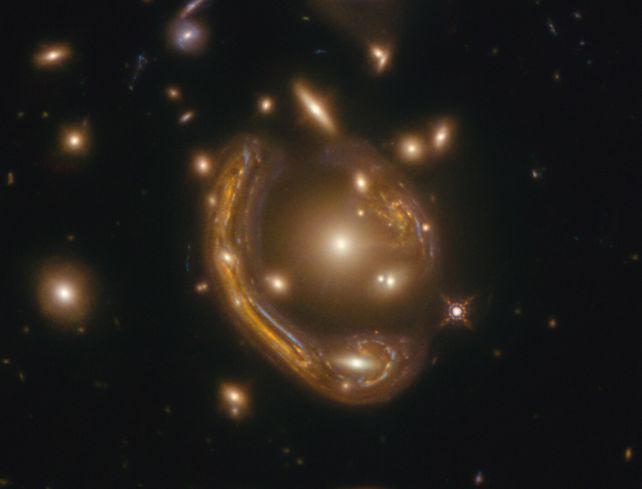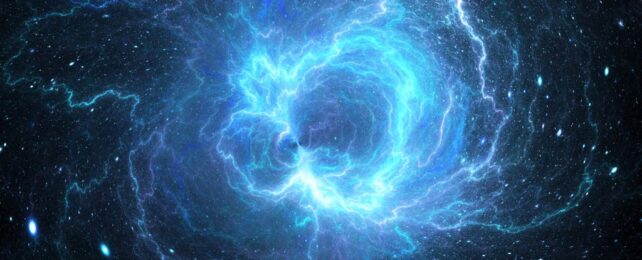Three objects spotted lurking in the murk of the Cosmic Dawn could be powered by collisions between particles made not of normal star stuff but the enigmatic material known as dark matter.
Using data from the James Webb Space Telescope, a team of theoretical astrophysicists has determined that three galaxies – named JADES-GS-z13-0, JADES-GS-z12-0, and JADES-GS-z11-0 – are consistent with what we might expect if we were looking at colossal, single stars powered by dark matter heating, rather than nuclear fusion.
According to Cosmin Ilie and Jillian Paulin of Colgate University and Katherine Freese at the University of Texas, Austin, this model could help us understand the nature of dark matter and explain where the Universe's abundance of supermassive black holes comes from.
There are a lot of gaps in our knowledge of the Universe, and dark stars could address a number of them.

Firstly, there is dark matter. We don't know what dark matter is, but we know there's a lot more than the normal matter that makes up pretty much everything we can see, from galaxies and black holes to ants and biscuits. We know this because we see its gravitational effects – as though there are just masses of, well, mass out there that we can't see or detect any other way.
Another problem is that we've never actually seen the first stars that burned in the Universe. We've seen evidence for them, but not the stars themselves.
And then there are supermassive black holes, around which galaxies orbit. We don't know how these objects – millions to billions of times the mass of the Sun – get so huge.
Finally, since it commenced operations in July of 2022, JWST has identified a large number of massive galaxies in the early Universe. How these galaxies became so large in such a short space of time since the Big Bang is a puzzle.
Dark stars provide a neat solution. We know what normal stars are: giant balls of hydrogen and helium, mostly, with extremely hot, pressurized cores where atoms are slammed together in nuclear fusion that generates heat and light.

According to Ilie and his colleagues, dark matter stars would be powered by dark matter annihilation instead. One theory of dark matter is that it's self-annihilating; when two dark matter particles collide, they wipe each other out in mutual destruction and a burst of heat and light.
There would have been a lot more dark matter in the early Universe under this model. It could have created blobs in the mass range of a million Suns, canceling itself out in a furnace of heat radiating with a brightness of a billion Suns and brightness of a billion Suns.
JADES-GS-z13-0, JADES-GS-z12-0, and JADES-GS-z11-0, seen in the first few hundred million years after the Big Bang, fit the expected characteristics of such objects.
Over time, such stars would collapse into supermassive black holes, which would explain why we don't see them anymore – and why we see so many supermassive black holes.
And they would also explain why the first generation of stars aren't around, even though stars nearly as old as the Universe itself can be found even here in our galaxy. If dark stars did exist, first-generation stars are still around; they just look very different.
It's highly theoretical and not yet verified; that would require much more detailed observations. According to the team's calculations, dark stars and early galaxies would have different helium signatures, and we could differentiate them by seeing these signatures. JWST, however, is currently the most powerful space telescope ever built. Obtaining that information may have to wait for future telescopes.
The research has been published in the Proceedings of the National Academy of Sciences.
